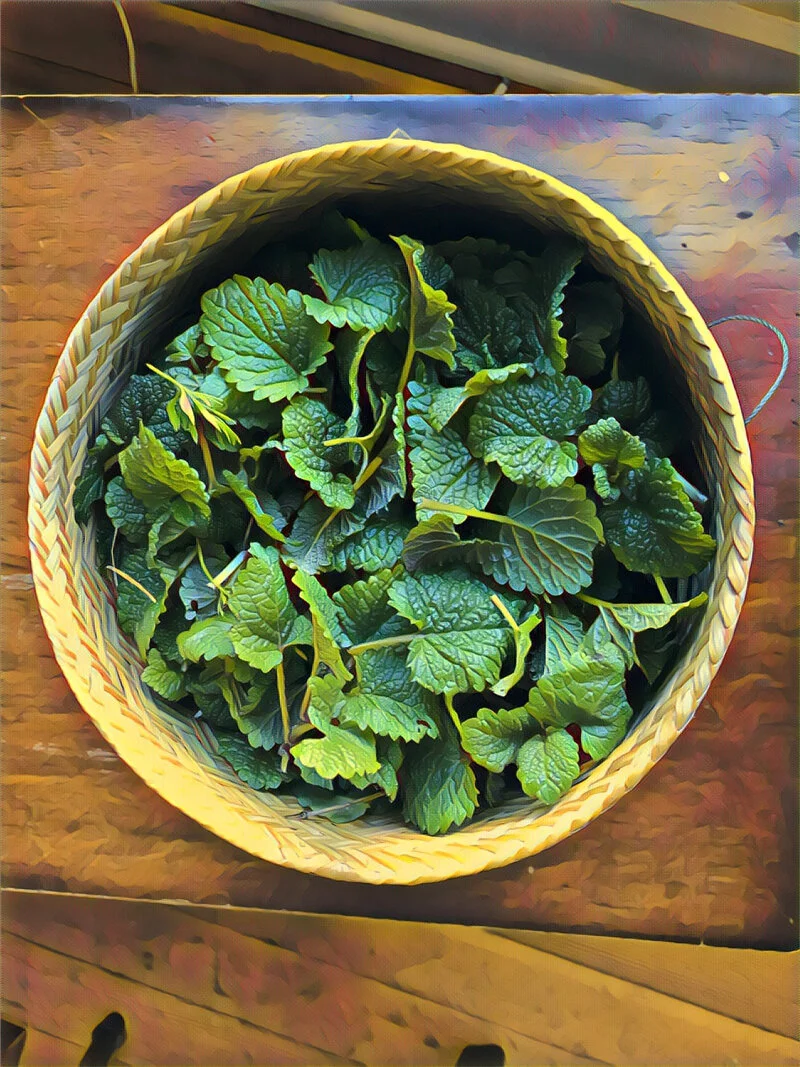After doing an assessment, what are the ways that an herbalist can assist someone who is struggling with their emotional wellbeing? Before we get to protocols, it is important to examine the larger health issues that can play a role in mental illness symptoms. I have talked about how we have changed how we perceive mental illness. Beginning in the middle of the 20th century, scientists started looking at the role of neurotransmitters such as serotonin, dopamine and GABA influence mood and wellbeing. Much of the modern psychiatric lens is based on seeing individuals as having a “chemical imbalance”, meaning a deficit or surplus of some neurotransmitters that can be managed and adjusted by various psychiatric drugs. However, that view of mental illness increasingly has come under scrutiny and has been found to be seriously lacking.
All tagged mental health herbalism
Lemon Balm
What is it about this small little weedy herb that makes people delight and kind of freak out? I’d like to think its because its one of the friendliest, most easy and versatile herbs out there. If it pops up in your garden you will have a hell of a time eradicating it. It just wants to grow and spread and take over and for herbalists thats mainly fine. You can throw it in teas, make it into a useful tincture, infuse it in honey, add it to cordials, steam them for respiratorry conditions, throw a few leaves in salads and make it into a wonderful hydrosol for cleaning, skin care and as a room freshener.
Oregon Grape
Walk through a forest near my home in Portland, Oregon and you will often find Oregon Grape carpeting wide swaths of land. In city and suburban gardens, the taller Oregon Grape (Berberis aquifolium) is often planted as a hardy perennial for its pretty year round glossy green foliage, yellow flowers and blueberries. This is a plant that is near and dear to many herbalists as it is deeply useful for a variety of health complaints.
Red Belted Conk
In this beautiful stretch of land, the red belted conk mushroom stands as the sentinels of the forest- growing from decaying and rotted hemlocks. These are the alchemists, turning rotting and decaying wood lignin into their cell walls, extracting the dead material of the trees and turning it back into life. Intertwining filaments of mycelium spread throughout these hemlocks and create the substrate for a number of conks to sprout from the old trees. These conks then grow year after year, a new fresh white layer that becomes a ring. Some of these mushrooms last only a few years and some grow to a ripe old age of 20-40 years. These are the massive conks that are astonishing when we find them.
Kratom
In the last few years there has been an explosion in the use of an herb known as kratom here in the U.S. Kratom comes from a tree common to South East Asia where it has been traditionally used for centuries. Mitragyna speciosa comes from the same family of plants as coffee (Rubiaceae) and has been commonly used as a stimulant (in low doses), a sedative (in high doses), an analgesic, for its euphoric qualities, to reduce dependence on opioids, for increased concentration and to improve mood and wellbeing.





